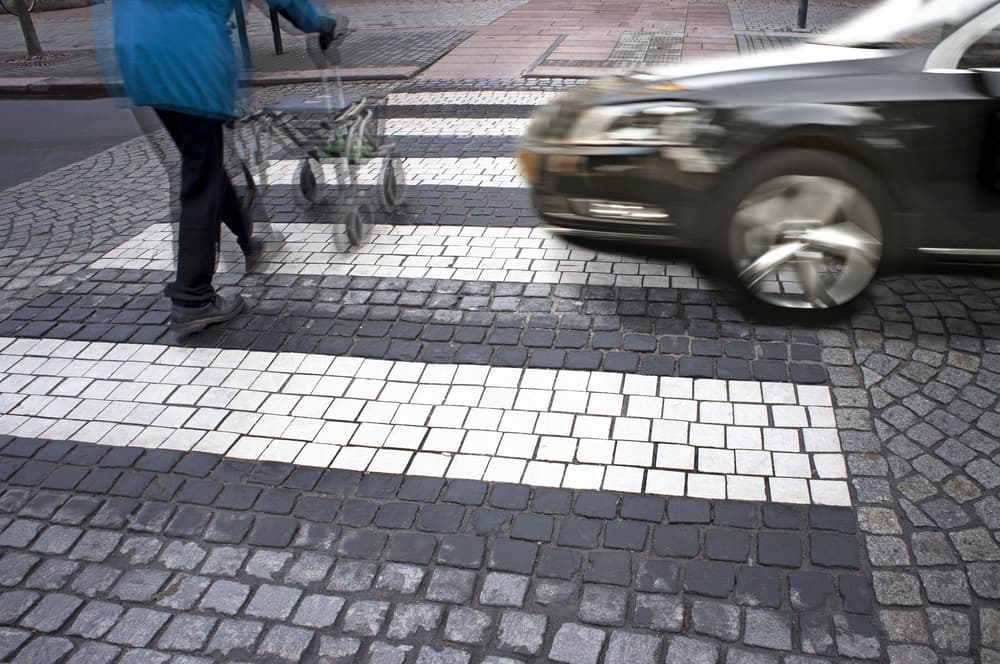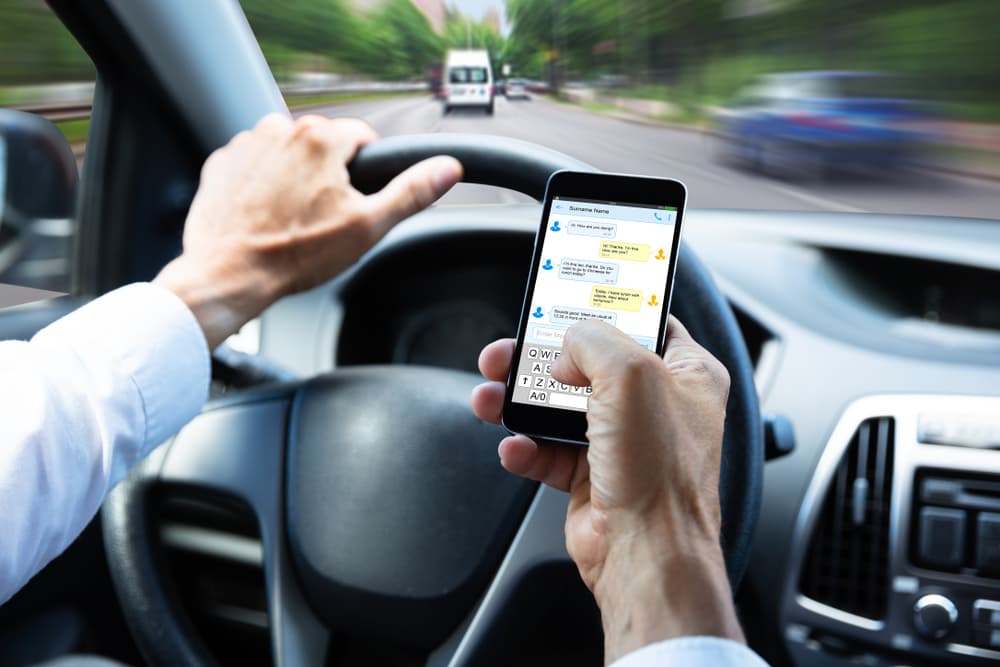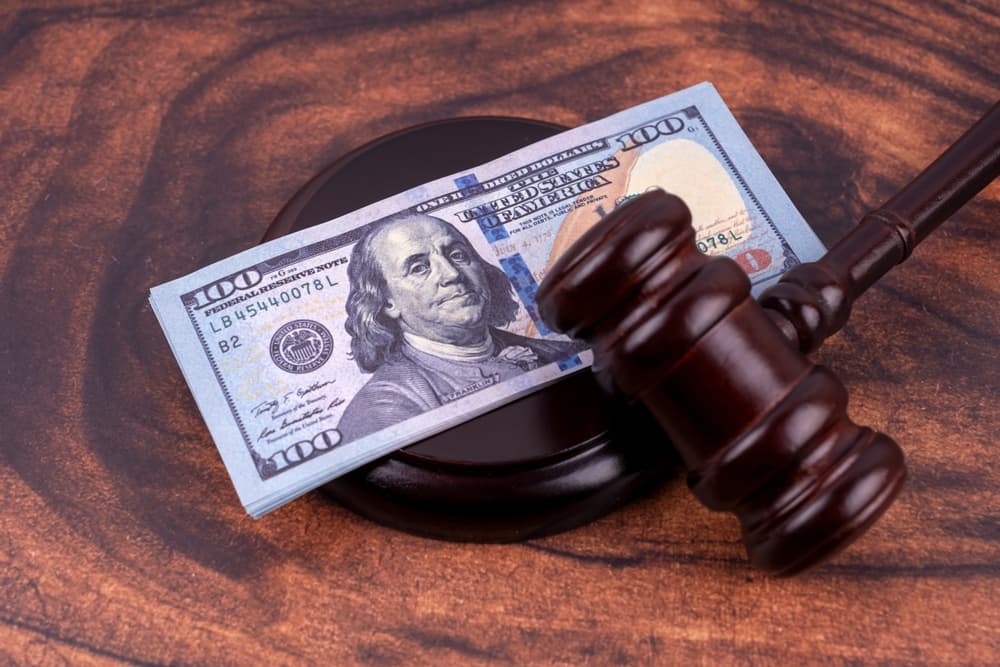Pedestrian accidents typically happen when drivers commit traffic law violations and drive irresponsibly. In these scenarios, pedestrians may strike the ground or an object (including a vehicle) with a significant amount of force, leading to permanent and sometimes fatal injuries.
If you or someone you love suffered injuries in a pedestrian accident caused by a negligent driver, you have legal options available. An experienced Calgary pedestrian accident lawyer can review your case, determine your options, and handle the claims filing and litigation processes for you.
Where do Pedestrian Accidents Usually Happen?

Pedestrian accidents can occur in various locations, but some places are more common than others for these incidents. Here are the most frequent locations where pedestrian accidents occur:
- Busy Traffic Intersections – Intersections are high-risk areas for pedestrian accidents due to the convergence of vehicles and pedestrians crossing the road. Accidents can happen when drivers fail to yield the right-of-way or fail to stop at crosswalks, putting pedestrians at risk.
- Sidewalks – Pedestrians walking along sidewalks may also be at risk if drivers veer off the road or fail to yield when turning at intersections. Negligent drivers may also drive onto sidewalks due to distractions or reckless driving behaviour.
- Crosswalks – Crosswalks are designated areas for pedestrians to safely cross the street, but accidents can still occur when drivers fail to yield or fail to stop at crosswalks. Pedestrians may also be struck by vehicles while crossing at unmarked or poorly marked crosswalks.
- Parking Lots – Parking lots are busy areas with a mix of pedestrians and vehicles, making them prone to accidents. Pedestrians may be struck by vehicles backing out of parking spaces or navigating through crowded parking lots.
- Residential Streets – Residential streets are common locations for pedestrian accidents, especially in neighbourhoods with children playing or people walking pets. Drivers may ignore posted speed limits or fail to watch for pedestrians, increasing the risk of accidents.
- Bus Stops – Pedestrians waiting at bus stops may also be at risk when drivers fail to stop or yield when approaching the bus stop. Accidents can also occur when pedestrians are boarding or exiting buses.
- Shopping Areas – Areas with high foot traffic, such as malls, shopping centers, and downtown districts, are common locations for pedestrian accidents. Pedestrians may be struck by vehicles while crossing between stores or navigating through crowded shopping areas.
- School Zones – School zones are areas with increased pedestrian traffic, especially during drop-off and pick-up times. Drivers must exercise extra caution and obey reduced speed limits in school zones to ensure the safety of all pedestrians – particularly children.
If you or a person you love suffered injuries in a pedestrian accident that occurred at one of these locations, an experienced pedestrian accident lawyer can gather important documents, including police reports and medical records, and file a claim with the at-fault driver’s insurance company.
How do Pedestrian Accidents Happen?

The negligence of others can contribute to pedestrian accidents in various ways – often resulting in serious injuries or fatalities. Here’s how the negligence of drivers and other parties may cause pedestrian accidents:
- Distracted Driving – Drivers who become distracted with activities like texting, talking on the phone, eating, or adjusting the radio are less likely to notice pedestrians crossing the road and may fail to react in time to avoid an accident.
- Speeding – Excessive speeding reduces a driver’s ability to stop suddenly, increasing the risk of colliding with pedestrians. Speeding drivers may not have enough time to react to pedestrians crossing the street, especially in areas with limited visibility or heavy traffic.
- Failure to Yield – One of the most common causes of pedestrian accidents is when drivers fail to yield the right-of-way to pedestrians – especially at crosswalks or traffic intersections. This can occur due to distractions, speeding, or simply not paying attention to nearby pedestrians.
- Disregarding Traffic Signals – Pedestrian accidents can happen when drivers ignore traffic signals, stop signs, or pedestrian crossing signs, putting pedestrians at risk of being struck by their vehicles.
- Driving Under the Influence – Impaired drivers, whether due to alcohol, drugs, or medication, often experience reduced reaction times and impaired judgment, making them more likely to collide with pedestrians.
- Obstructed Visibility – Obstructions like parked cars, overgrown vegetation, or improperly placed signage can obstruct visibility and make it harder for drivers to see pedestrians crossing the road.
- Poor Road Design or Maintenance – In some cases, pedestrian accidents may result from poor road design or maintenance issues, such as inadequate lighting, lack of crosswalks, or poorly marked pedestrian pathways.
If you suffered injuries in a pedestrian accident due to someone else’s negligence, a pedestrian accident lawyer in your area can explore your settlement and litigation options and help you make important decisions throughout your case.
Common Injuries in a Pedestrian Accident
Pedestrian accident victims can suffer a range of injuries, some of which may be severe and life-altering. Here are the most common injuries that pedestrian accident victims may experience, along with the most common types of medical treatment they may need:
- Head Injuries – Pedestrians are particularly vulnerable to head injuries in accidents, which can range from concussions and traumatic brain injuries (TBIs) to skull fractures. Treatment may include diagnostic imaging (such as CT scans or MRIs), monitoring for signs of brain injury, and, in severe cases, surgery to relieve pressure on the brain.
- Orthopedic Injuries – Pedestrians may also suffer fractures or breaks in their bones, including arms, legs, hips, and pelvis, due to the strong force of the accident. Treatment may involve casting, splinting, or surgery to realign and stabilize the fractured bones, followed by physical therapy to regain strength and mobility.
- Soft Tissue Injuries – Soft tissue injuries such as bruises, sprains, strains, and contusions are common in pedestrian accidents. Treatment typically includes rest, ice, compression, and elevation (RICE therapy), along with pain management and physical therapy to promote healing and restore function.
- Spinal Cord Injuries – Pedestrians may suffer spinal cord injuries if the force of the accident damages their spinal cord or vertebrae. Treatment may include immobilization of the spine, surgery to stabilize the spine, and rehabilitation to improve mobility and function.
- Internal Injuries – Internal injuries, such as organ damage or internal bleeding, may occur in pedestrian accidents. Treatment can involve diagnostic imaging (such as ultrasound or CT scans) to assess the extent of the injuries, followed by surgery to repair or remove damaged organs and control bleeding.
- Cuts and Lacerations – Pedestrians may suffer cuts, lacerations, or road rash from contact with the vehicle, pavement, or surrounding objects. Treatment may involve cleaning and suturing the wounds, along with antibiotics to prevent infection and dressing changes to promote healing.
- Psychological and Emotional Trauma – Pedestrian accident victims may also experience psychological trauma, such as post-traumatic stress disorder (PTSD), anxiety, or depression. Treatment can include therapy, counselling, and medication to address mental health issues and improve coping skills.
If you suffered one or more of these injuries in a pedestrian accident, a pedestrian accident lawyer in your area can handle the legal steps of your case while you focus on recovering fully from your injuries.
Legal Elements of a Pedestrian Accident Case
In a pedestrian accident claim or lawsuit, victims need to prove certain legal elements to establish liability and seek compensation for their injuries. Here are the key legal elements that pedestrian accident victims typically need to prove:
- Duty of Care – The first element to establish is that the defendant (usually the driver of the vehicle) owed a duty of care to the pedestrian. This duty involves exercising reasonable care and caution to avoid causing harm to others while driving.
- Breach of Duty – The next step is to show that the defendant breached the duty of care owed to the pedestrian. This can involve actions such as speeding, distracted driving, disobeying traffic laws, or failing to yield the right of way to pedestrians.
- Causation – Pedestrian accident victims must also demonstrate that the defendant’s breach of duty directly caused their injuries and damages. This requires establishing a causal link between the defendant’s negligent actions and the harm that the pedestrian suffered.
- Damages – Finally, the pedestrian must prove that they suffered actual damages as a proximate result of their accident. Damages can include pain and suffering, loss of earnings, loss of earning capacity, disability, disfigurement, and similar losses.
To prove these legal elements effectively, pedestrian accident victims may need to gather various types of evidence, including:
- Eyewitness Testimony – Statements from witnesses who saw the accident occur firsthand can provide valuable insight into exactly what happened and who was responsible.
- Accident Reconstruction – Expert analysis and reconstruction of the accident scene, vehicle damage, and injuries can help establish how the accident occurred and who was likely at fault.
- Medical Records – Documentation of the pedestrian’s injuries, medical treatment, and prognosis is essential for proving damages and calculating the amount of compensation to award the pedestrian.
- Police Reports – Official police reports documenting the details of the accident, including statements from involved parties and any citations issued, can serve as important evidence when it comes to proving liability.
- Video Surveillance Footage – Video footage from nearby cameras, buildings, or surveillance systems can provide visual evidence of the accident and help corroborate the pedestrian’s account of events.
By gathering and presenting this evidence, pedestrian accident victims and their lawyers can build a strong case to support their claims for compensation and hold the negligent parties accountable for their actions.
An experienced pedestrian accident lawyer is invaluable in navigating the legal process and advocating for the pedestrian’s rights and interests – both during settlement negotiations and litigation proceedings.
Recovering Favorable Monetary Damages Following a Pedestrian Accident

When an injured pedestrian seeks compensation for their losses in a claim or lawsuit, they may be eligible to recover various types of damages to address both the economic and non-economic effects of the accident. Here are the types of damages that an injured pedestrian accident victim can recover:
- Economic Damages – These are quantifiable financial losses that the pedestrian incurs as a result of the accident. They typically include:
- Lost Wages – Pedestrians may be entitled to compensation for income lost due to their injuries, including income from missed work days, reduced work hours, or inability to return to work on a temporary or permanent basis.
- Future Earnings – If the pedestrian’s injuries prevent them from returning to work or result in reduced earning capacity in the future, they may be eligible to recover compensation for the loss of future income and earning potential.
- Non-economic Damages – These are subjective losses that are more difficult to quantify but are nonetheless significant. They may include compensation for:
- Physical and Emotional Pain and Suffering – This type of damage compensates the pedestrian for the physical pain, emotional distress, and mental anguish they have endured as a result of the accident and their injuries.
- Loss of Enjoyment of Life – Pedestrians may be entitled to compensation for the loss of their ability to participate in activities and hobbies they enjoyed prior to the accident because of their injuries.
- Loss of Consortium – Spouses or family members of the injured pedestrian may be eligible to recover compensation for the loss of companionship, services, and support resulting from the pedestrian’s injuries.
- Punitive Damages – In cases involving extreme negligence or misconduct by the at-fault party, punitive damages may be available as a way to hold the responsible party accountable – and to prevent similar incidents from occurring in the future.
Recovering these types of damages can help injured pedestrian accident victims address the financial, physical, and emotional effects of their accidents and begin the process of rebuilding their lives. An experienced pedestrian accident lawyer can help to ensure that victims receive fair compensation for all of their accident-related losses and damages.
Speak to a Skilled Pedestrian Accident Lawyer in Your Area Today
Seeking out experienced legal representation is one of the most important steps you can take following a pedestrian accident that leads to injuries. A knowledgeable Calgary personal injury lawyer can guide you through every step of the settlement and litigation processes and aggressively fight for your interests each step of the way.
